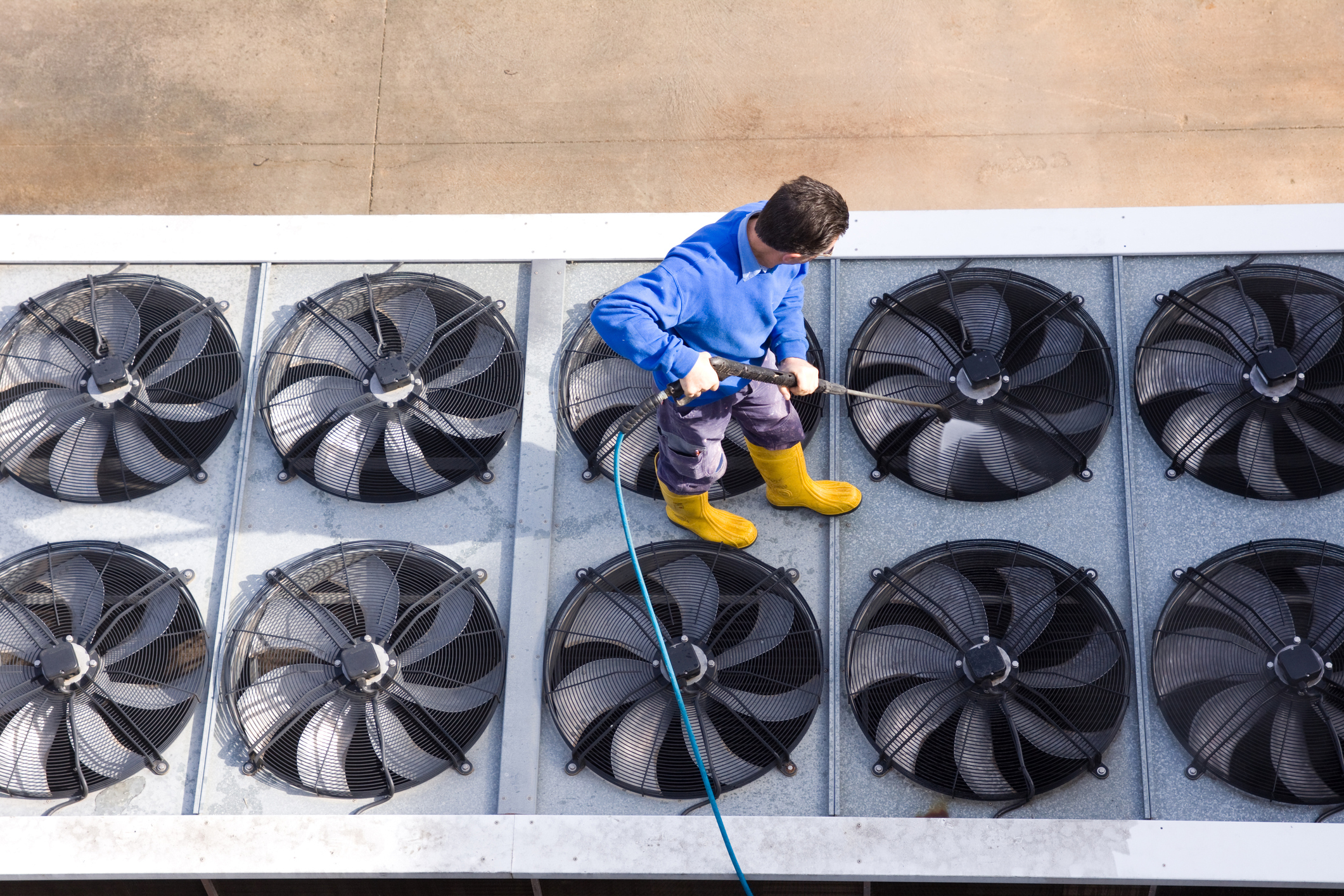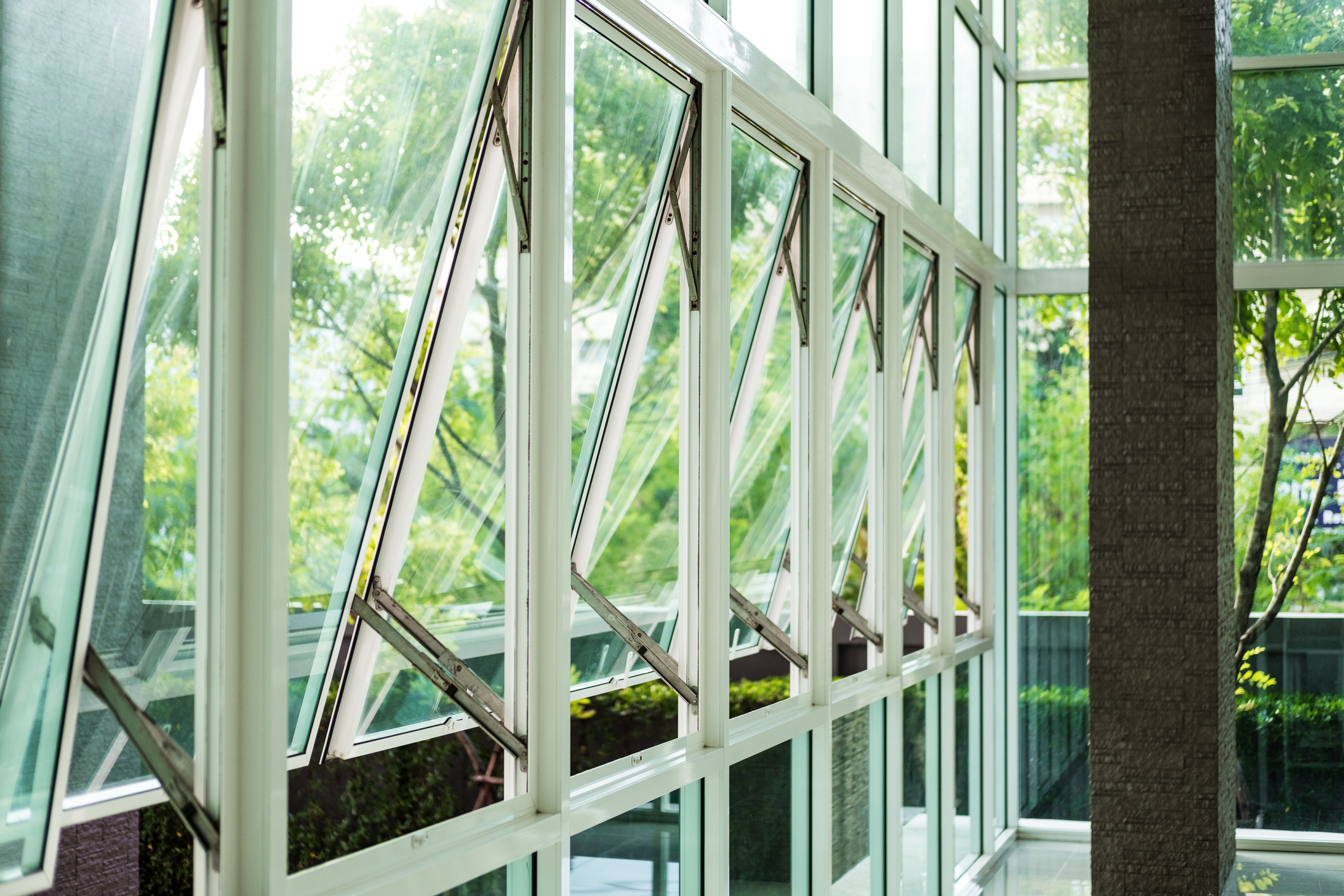Tenants are slowly returning to office buildings and commercial leasing deals are gaining momentum.
But commercial real estate (CRE) owners and operators aren’t out of the woods yet.
Many tenants are still rightly concerned about COVID-19 transmission. If left unattended, these doubts could escalate into tenant turnover.
In CRE’s new normal, a well-managed HVAC system will be your ace in the hole.
The available data shows increased ventilation and air filtration greatly reduce the risk of virus transmission indoors.
Would you like to optimize your system to prevent disease transmission without breaking the bank?
1. Skip Full Replacements
A recent report by Building Engines showed only four percent of tenants requested a full HVAC upgrade. Given the expense, full-scale HVAC replacement is not a practical first-choice option.
If your unit is older (the average lifespan of a commercial HVAC unit is 15-20 years with proper maintenance), it might be time to investigate replacement. Otherwise, investigate these smaller-scale upgrades and advanced maintenance measures.
2. Increase Air Duct Inspections
Air ducts distribute air throughout a building. Regularly maintaining your ductwork is crucial to prevent dust, mold, pollen, and pest debris.
If air ducts are neglected, these agents can accumulate to the point where they start to re-enter your building’s air.
When this happens, tenants will certainly notice their workspaces becoming dusty. As a rule of thumb, air ducts should be cleaned every 3 to 5 years. But property teams might want to increase this frequency throughout the COVID-19 pandemic.
As a bonus, when air ducts get plenty of TLC they operate more quietly, reducing tenants’ distraction.

3. Use Outdoor Air
For an effective (and free!) virus-mitigating resource, look out the window.
Take advantage of fresh air by opening windows and doors to increase outdoor air flow whenever practical. Even a slightly open window can usher in beneficial outdoor air, dilute harmful particles, and increase tenants’ peace of mind.
To begin, open outdoor air dampers beyond minimum settings to reduce or eliminate HVAC air recirculation. Of course, action should be weather-permitting and done after consulting an HVAC professional.
Use this measure in moderation, since an influx of outdoor air can impact the performance of a building’s HVAC system.

4. Use Fans to Increase Open Windows’ Effectiveness
When used together, your HVAC system and added fans are a powerful one-two punch against disease transmission.
But to get maximum benefit, fan placement is key. Incorrectly positioned fans can cause contaminated air to flow directly from one person to another.
How can you prevent this?
- Avoid using high-speed settings.
- Use ceiling fans in the reverse-flow direction so air is directed toward the ceiling.
- Direct fan discharge towards unoccupied corners or wall spaces above occupied zones.
- Use a window fan to pass room air outdoors. This prevents the generation of room air currents leading to particle transmission.
At typically less than $100 per fan, this is an easy, cost-effective measure that provides visible proof to tenants you’re taking their concerns seriously.
5. Improve Energy Efficiency
In 2021, many competitive property teams are laser-focused on alleviating tenant air quality concerns, saving money, and boosting their reputation for being environmentally conscious.
You can accomplish all three aims with your HVAC system.
To reduce energy consumption, start by enlisting an HVAC professional to conduct an HVAC energy audit, or do so in-house. This will pinpoint where air might be escaping due to leaky air ducts, faulty compressors, or other reasons.
Then, place unoccupied areas of the building into setback to reduce energy consumption. You’ll need to rebalance your systems to deliver increased airflow to occupied spaces instead. But don’t lose sight of HVAC best practices in the quest to go green.
For example, the CDC recommends running an HVAC system at maximum outside airflow for two hours before and after a commercial building is occupied.
6. HEPA is Hot
Most tenants aren’t insistent upon full-scale HVAC replacements. A better option is installing high-efficiency particulate air (HEPA) filtration systems as a more cost-efficient way to make a building safer.
The CDC declared HEPA filters 99.97% effective at capturing harmful air particles associated with COVID-19. But note: HEPA filters are incredibly simple technology. There is no need to spring for the most expensive option when more competitively priced versions will work just fine.
As with any HVAC filter, you’ll need to ensure HEPA filters are properly sized to minimize airflows around, instead of through, the filter. And because HEPA filters remove more dust and debris from the air, they need more frequent changing.
HVAC: Much Air-do About Nothing?
With vaccines now widely available, some may want to dismiss air quality concerns.
But remember: You’re still competing against other buildings and the lure of the home office. If you aren’t taking clear, visible steps to alleviate ongoing tenant concerns, they might think twice about returning to your buildings and renewing leases.
HVAC management software like Ravti, from Building Engines, can improve your HVAC performance. Find out more by downloading this Ultimate Kit to Commercial HVAC Management.
Inside, you’ll find tips for stress-free capital planning, the benefits of digitizing your HVAC inventory, and foolproof ways to maximize your HVAC system’s lifespan.










